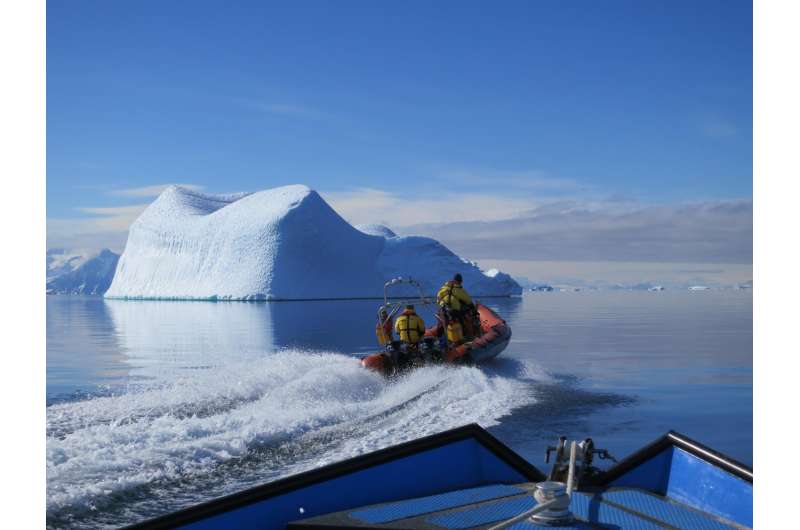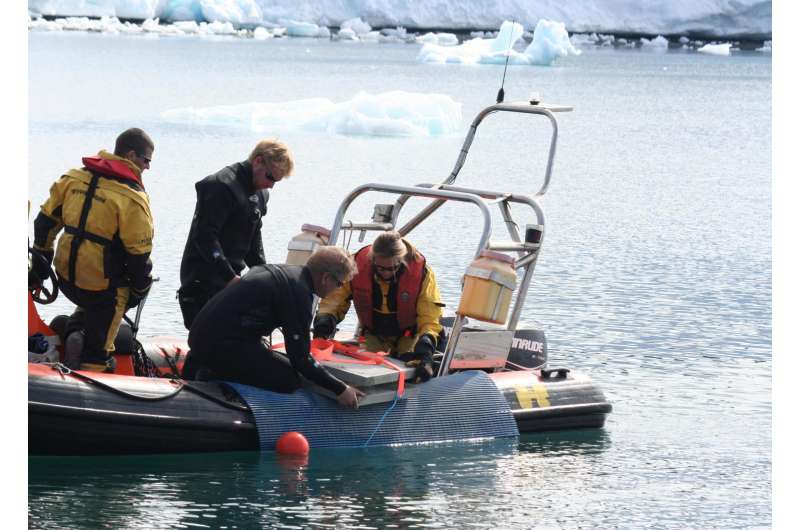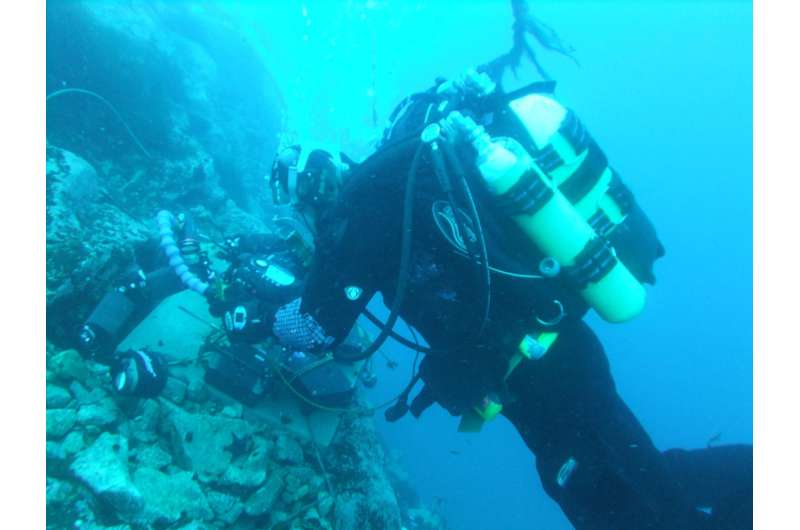What changes when you warm the Antarctic Ocean just 1 degree? Lots

After warming a natural seabed in the Antarctic Ocean by just 1° or 2° Celsius, researchers observed massive impacts on a marine assemblage, as growth rates nearly doubled. The findings of what the researchers call the "most realistic ocean warming experiment to date" reported in Current Biology on August 31 show that the effects of future warming may far exceed expectations.
"I was quite surprised," says Gail Ashton of the British Antarctic Survey and Smithsonian Environmental Research Center. "I wasn't expecting a significant observable difference in communities warmed by just 1°C in the Antarctic. I have spent most of my career working in temperate climates where communities experience much greater temperature fluctuations and wasn't expecting such a response to just 1°C of change."
Predicting how organisms and whole communities will respond to climate change in the future remains a major challenge. So, Ashton and her colleagues decided to actually warm an area of seabed around the Rothera Research Station and watch what happened. They deployed heated settlement panels to warm a thin layer of water by 1°C or 2°C above the ambient temperature. Those increases in global temperature are expected within the next 50 and 100 years, respectively.
The experiment showed that with a 1°C increase in temperature, a single pioneer species of bryozoan (Fenestrulina rugula) took off. That one species ultimately dominated the community, driving a reduction in overall species diversity and evenness within two months. Individuals of a marine worm, Romanchella perrieri, also grew to an average size 70 percent larger than those under ambient conditions, the researchers report.

The responses of organisms to a 2°C rise in temperature were much more variable. Growth-rate responses to warming differed among species, ages, and seasons. Species generally grew faster with warming through the Antarctic summer. However, different responses among species were observed in March, when both food availability for suspension feeders and ambient temperature declined, the researchers report.
The researchers say the findings suggest that climate change could have even greater effects on polar marine ecosystems than had been anticipated. As the planet warms, there will be winners (like the bryozoan Fenestrulina rugula) and losers.
The researchers say they now plan to expand the use of this technology to investigate the response to warming in other locations and communities, including the Arctic.

More information: Current Biology, Ashton et al.: "Warming by 1°C Drives Species and Assemblage Level Responses in Antarctica's Marine Shallows" www.cell.com/current-biology/f … 0960-9822(17)30952-1 , DOI: 10.1016/j.cub.2017.07.048
Journal information: Current Biology
Provided by Cell Press



















